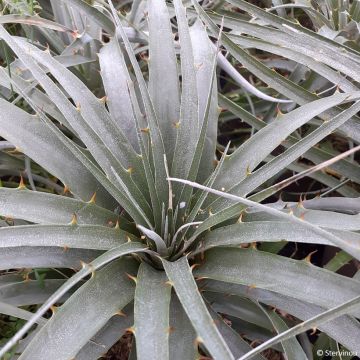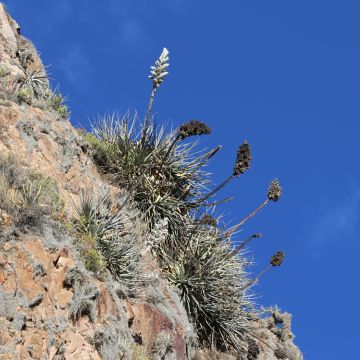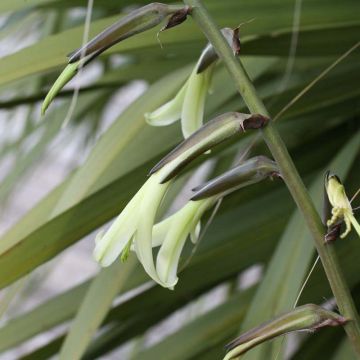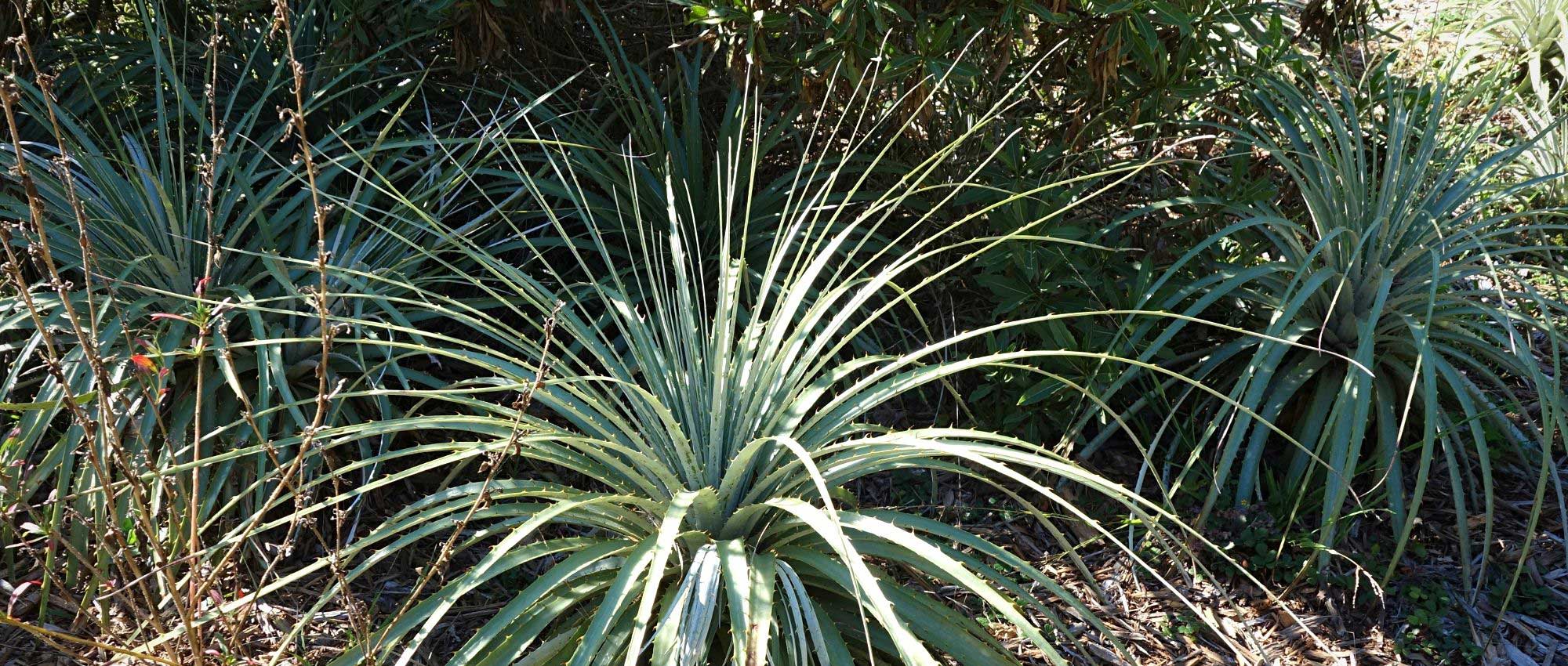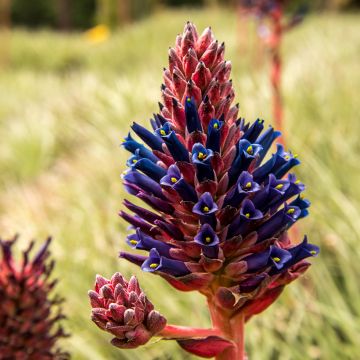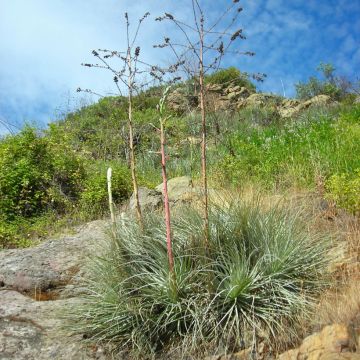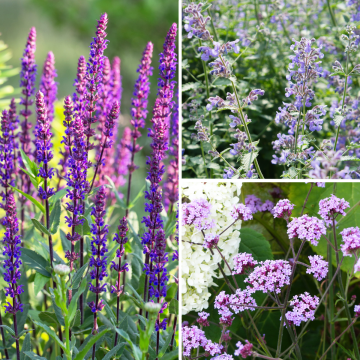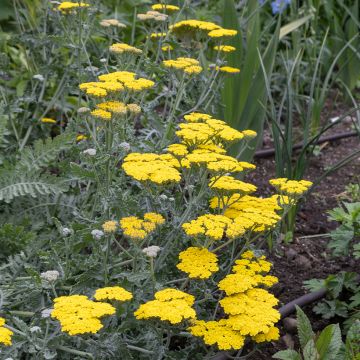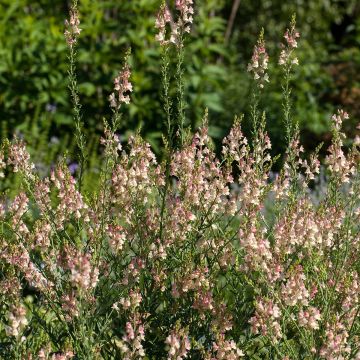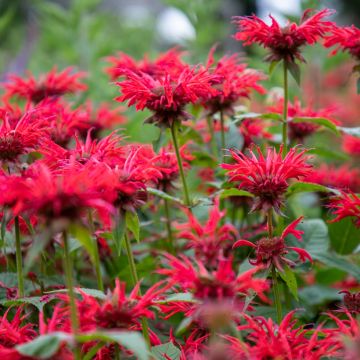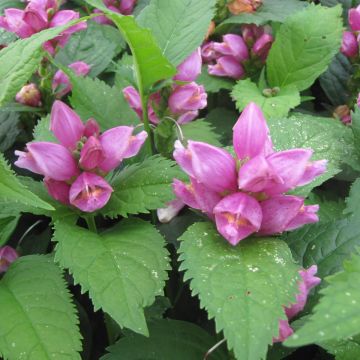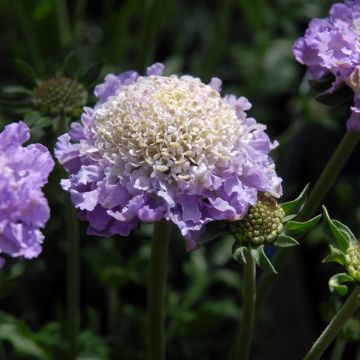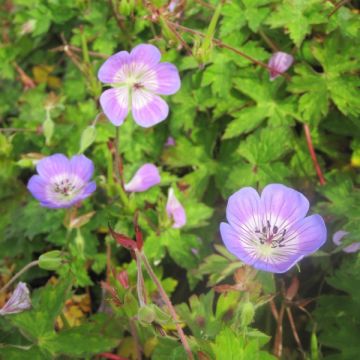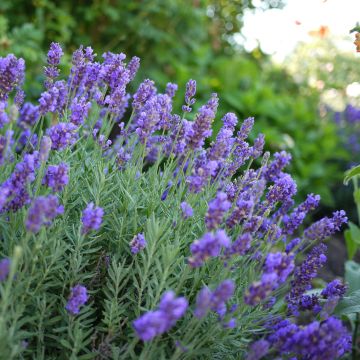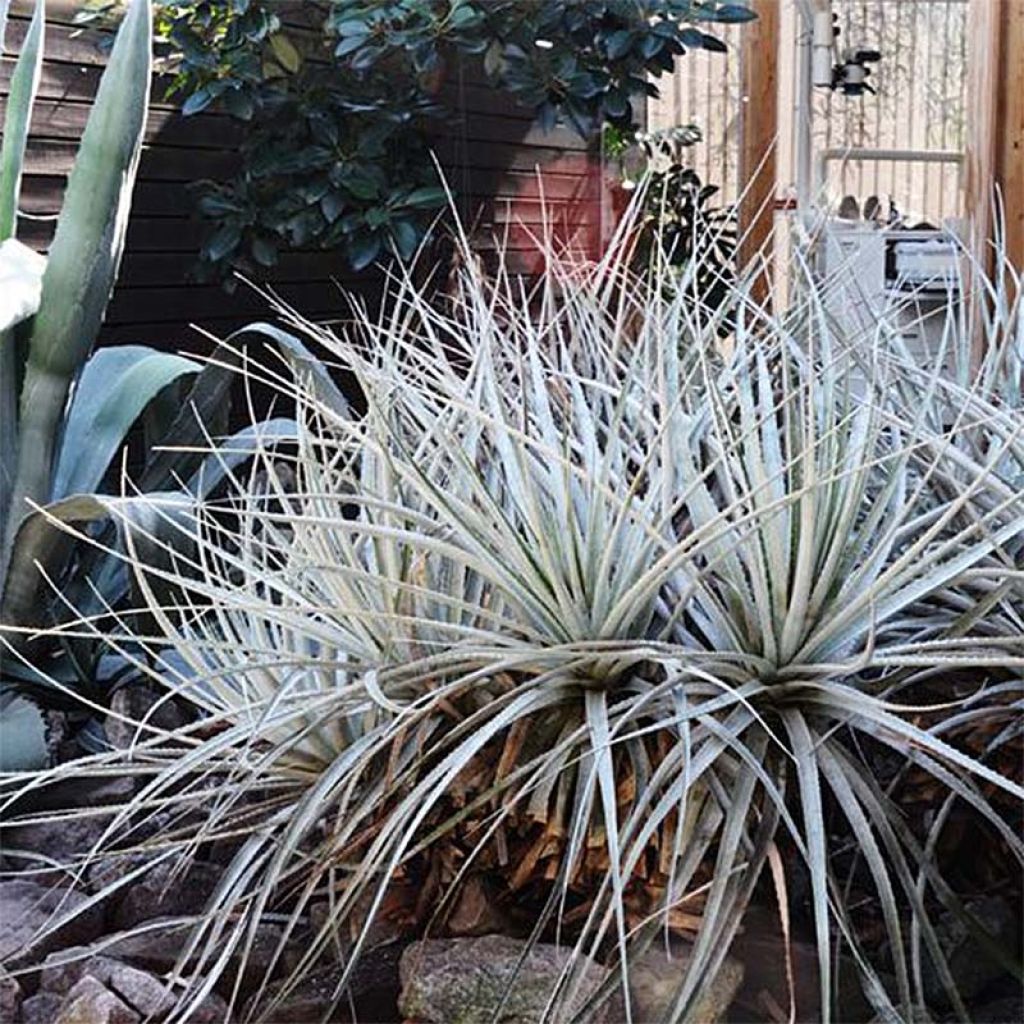

Puya harmsii - Chagual
Puya harmsii
Puya harmsii
Puya
Special offer!
Receive a €20 voucher for any order over €90 (excluding delivery costs, credit notes, and plastic-free options)!
1- Add your favorite plants to your cart.
2- Once you have reached €90, confirm your order (you can even choose the delivery date!).
3- As soon as your order is shipped, you will receive an email containing your voucher code, valid for 3 months (90 days).
Your voucher is unique and can only be used once, for any order with a minimum value of €20, excluding delivery costs.
Can be combined with other current offers, non-divisible and non-refundable.
Why not try an alternative variety in stock?
View all →This plant carries a 12 months recovery warranty
More information
We guarantee the quality of our plants for a full growing cycle, and will replace at our expense any plant that fails to recover under normal climatic and planting conditions.
Does this plant fit my garden?
Set up your Plantfit profile →
Description
The Puya harmsii is part of a group of succulent perennial plants, related to pineapples, that grow in arid heathlands and matorrals of the Andes. As spectacular as they are robust and undemanding, these strange queens of the Andes have been almost impossible to find in Europe until now, but they are making their way to collectors of exotic plants who also know how to be patient. This one is one of the most beautiful, its rosette of leaves, resembling that of an almost white agave, is particularly ornamental. As for its flowering, although it takes time, it is as original as it is impressive; from the center of the rosette emerges a tall velvety flower spike with unreal colors, adorned with dark blue flowers and red bracts. In suitable climates, it is a magnificent rockery or dry slope plant. Elsewhere, it can be grown in a large pot to protect it from cold and dampness in winter.
The Puya harmsii belongs to the bromeliad family. It is a xerophyte, adapted to arid soils and very dry climates in both winter and summer. It is endemic to the mountains of northwestern Argentina, where it thrives in large colonies in a hostile environment. This species can withstand temperatures as low as -6°C (21.2°F) in well-drained soil and tolerates limestone.
This puya has a slow growth, forming fairly dense rosettes of leaves that can reach a height and spread of 80cm (32in) to 1m (3ft). Over time, the plant spreads to form large clumps composed of multiple rosettes. The leaves are thick, fairly wide, long, tapering to a point, leathery, light gray-silver in colour, and bordered by small inward-curving spines. Mature rosettes, around 6 to 7 years old, bloom in late spring, in June. From their center emerges a velvety pink-red flower spike that can reach a height of 2m (7ft). At its tip, it bears a large, wide, oval-shaped inflorescence tightly packed with numerous tubular flowers in iridescent black-blue colour with orange stamens, enclosed in bright red calyxes. These flowers are flared and well adapted to the beaks of native nectar-feeding birds that come to drink nectar while ensuring pollination. Flowering marks the death of the rosette, but the plant ensures its perpetuation by producing daughter rosettes near its base.
The Puya harmsii requires planting in well-drained soil, sandy or rocky, almost dry in winter, and it tolerates hot and dry summers well. Do not place this spiny plant near a walkway and keep it away from young children. In Mediterranean climates, this plant finds its place in a large rockery or gravel bed. To accompany it in an arid-style rockery, as well as on a contemporary terrace, consider, for example, Yuccas, Dasylirions, Phormiums, and Nolinas. This plant can be easily cultivated in containers with a cactus soil mix. As soon as the first cold weather arrives, you should store it away from dampness and cold, handling it with caution due to its spines, in a temperate greenhouse or an unheated conservatory.
The Puya is called the "sheep-eating plant" by English speakers. Indeed, its spiky vegetation allows it to defend itself against the teeth of herbivores in arid heathlands where few plants can survive. Imagine a sheep with its wool getting too close to the puya: it would risk getting trapped until its death and serve as food for the plant.
Puya harmsii in pictures
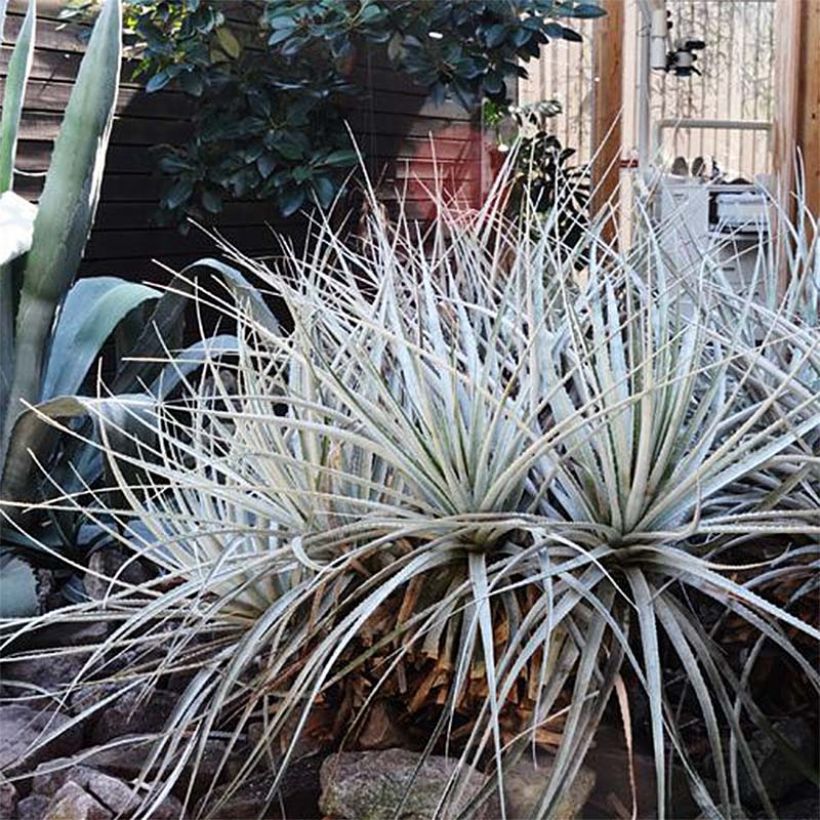

Flowering
Foliage
Plant habit
Botanical data
Puya
harmsii
Bromeliaceae
Puya
South America
Other Puya
View all →Planting and care
The Puya harmsii is preferably planted in spring, in open ground, choosing a very sunny, warm location. Plant it in a perfectly well-drained soil, enriched with compost, pumice, sand and gravel, in a rockery or on a sheltered arid slope away from cold winds. It will be hardy up to -5°C (23°F) or even more if the soil is almost dry in winter. To protect it from rain, you can place a thick mulch at its base and a plastic sheet on the rosette. In summer, it fears the combination of heat and excessive soil moisture, which causes its roots to rot. Once established, this Puya generally does not require watering in summer. In our very dry and very hot regions, occasional watering will be welcome, as well as a foliage shower at the end of a hot day. This species tolerates limestone.
Cultivation in pots: prepare a large container with a perforated bottom, equipped with a drainage layer (clay balls, gravel), which you will fill with a mixture of compost, sand and pumice. Water regularly, without exaggeration. Add a little cactus or succulent fertilizer to the watering water in spring.
Planting period
Intended location
Care
Planting & care advice
This item has not been reviewed yet - be the first to leave a review about it.
Similar products
Haven't found what you were looking for?
Hardiness is the lowest winter temperature a plant can endure without suffering serious damage or even dying. However, hardiness is affected by location (a sheltered area, such as a patio), protection (winter cover) and soil type (hardiness is improved by well-drained soil).

Photo Sharing Terms & Conditions
In order to encourage gardeners to interact and share their experiences, Promesse de fleurs offers various media enabling content to be uploaded onto its Site - in particular via the ‘Photo sharing’ module.
The User agrees to refrain from:
- Posting any content that is illegal, prejudicial, insulting, racist, inciteful to hatred, revisionist, contrary to public decency, that infringes on privacy or on the privacy rights of third parties, in particular the publicity rights of persons and goods, intellectual property rights, or the right to privacy.
- Submitting content on behalf of a third party;
- Impersonate the identity of a third party and/or publish any personal information about a third party;
In general, the User undertakes to refrain from any unethical behaviour.
All Content (in particular text, comments, files, images, photos, videos, creative works, etc.), which may be subject to property or intellectual property rights, image or other private rights, shall remain the property of the User, subject to the limited rights granted by the terms of the licence granted by Promesse de fleurs as stated below. Users are at liberty to publish or not to publish such Content on the Site, notably via the ‘Photo Sharing’ facility, and accept that this Content shall be made public and freely accessible, notably on the Internet.
Users further acknowledge, undertake to have ,and guarantee that they hold all necessary rights and permissions to publish such material on the Site, in particular with regard to the legislation in force pertaining to any privacy, property, intellectual property, image, or contractual rights, or rights of any other nature. By publishing such Content on the Site, Users acknowledge accepting full liability as publishers of the Content within the meaning of the law, and grant Promesse de fleurs, free of charge, an inclusive, worldwide licence for the said Content for the entire duration of its publication, including all reproduction, representation, up/downloading, displaying, performing, transmission, and storage rights.
Users also grant permission for their name to be linked to the Content and accept that this link may not always be made available.
By engaging in posting material, Users consent to their Content becoming automatically accessible on the Internet, in particular on other sites and/or blogs and/or web pages of the Promesse de fleurs site, including in particular social pages and the Promesse de fleurs catalogue.
Users may secure the removal of entrusted content free of charge by issuing a simple request via our contact form.
The flowering period indicated on our website applies to countries and regions located in USDA zone 8 (France, the United Kingdom, Ireland, the Netherlands, etc.)
It will vary according to where you live:
- In zones 9 to 10 (Italy, Spain, Greece, etc.), flowering will occur about 2 to 4 weeks earlier.
- In zones 6 to 7 (Germany, Poland, Slovenia, and lower mountainous regions), flowering will be delayed by 2 to 3 weeks.
- In zone 5 (Central Europe, Scandinavia), blooming will be delayed by 3 to 5 weeks.
In temperate climates, pruning of spring-flowering shrubs (forsythia, spireas, etc.) should be done just after flowering.
Pruning of summer-flowering shrubs (Indian Lilac, Perovskia, etc.) can be done in winter or spring.
In cold regions as well as with frost-sensitive plants, avoid pruning too early when severe frosts may still occur.
The planting period indicated on our website applies to countries and regions located in USDA zone 8 (France, United Kingdom, Ireland, Netherlands).
It will vary according to where you live:
- In Mediterranean zones (Marseille, Madrid, Milan, etc.), autumn and winter are the best planting periods.
- In continental zones (Strasbourg, Munich, Vienna, etc.), delay planting by 2 to 3 weeks in spring and bring it forward by 2 to 4 weeks in autumn.
- In mountainous regions (the Alps, Pyrenees, Carpathians, etc.), it is best to plant in late spring (May-June) or late summer (August-September).
The harvesting period indicated on our website applies to countries and regions in USDA zone 8 (France, England, Ireland, the Netherlands).
In colder areas (Scandinavia, Poland, Austria...) fruit and vegetable harvests are likely to be delayed by 3-4 weeks.
In warmer areas (Italy, Spain, Greece, etc.), harvesting will probably take place earlier, depending on weather conditions.
The sowing periods indicated on our website apply to countries and regions within USDA Zone 8 (France, UK, Ireland, Netherlands).
In colder areas (Scandinavia, Poland, Austria...), delay any outdoor sowing by 3-4 weeks, or sow under glass.
In warmer climes (Italy, Spain, Greece, etc.), bring outdoor sowing forward by a few weeks.






























